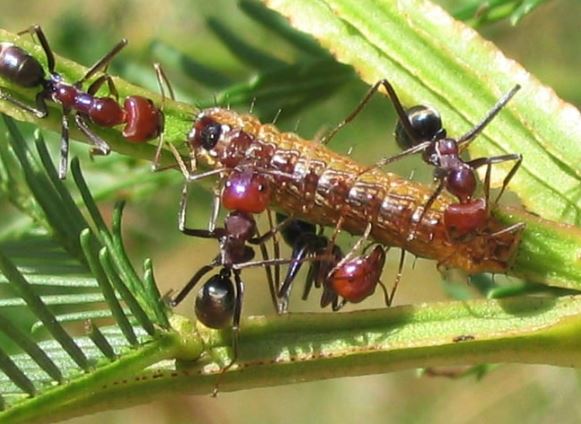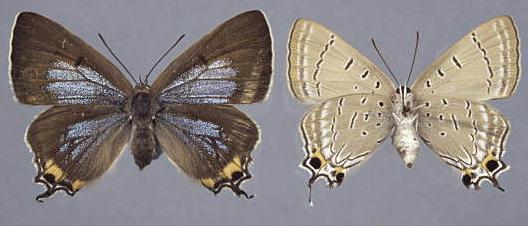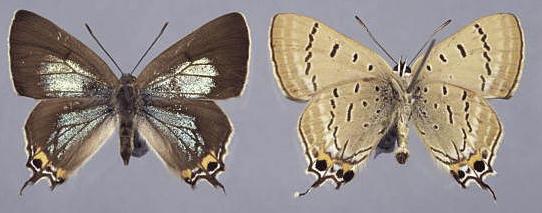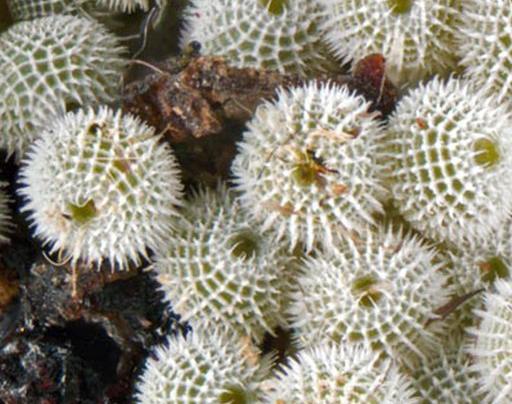
| Stencilled Hairstreak ZESIINI, THECLINAE, LYCAENIDAE, PAPILIONOIDEA | (donherbisonevans@yahoo.com) and Stella Crossley |

(Photo: courtesy of
Martin Purvis)

| Stencilled Hairstreak ZESIINI, THECLINAE, LYCAENIDAE, PAPILIONOIDEA | (donherbisonevans@yahoo.com) and Stella Crossley |

(Photo: courtesy of
Martin Purvis)
These Caterpillars are dark brown or green, with a broad dark dorsal band, and black and white diagonal lines on each segment. They are deeply segmented and have a pair of tubercles on most segments. They have a dark grey thorax, and there are pairs of tubercles on the thorax and the tail.
The Caterpillars are attended by the ants from the subfamily DOLICHODERINAE :
The Caterpillars have been known to feed on:
as well as
Pupation occurs on the foodplant, often in groups on or under the bark on twigs and branches. The pupa is brown with a length of about 1.3 cms.

The adult butterflies on top are dark brown with a metallic coloured patch in the middle of each wing. In the males, the patches are green, and in the females they are blue. The trailing edge of each hind wing has one short and one long short tail. Beside the long tail is an orange and black eyespot.

Underneath: the butterflies are fawn with a number of black lines and marks, and two indistinct white subterminal arcs. The hind wings each have two black and orange eyespots with black marks between them. The butterflies have a wing span of about 3 cms.

The eggs are pale green partly squashed spheres, and covered in a spiky white polygonal network. The eggs have a diameter of about 0.8 mm. They are laid in clusters of several dozen on a branch or trunk of a foodplant.
The species occurs mainly through the south-east quarter of Australia, including
Further reading :
Michael F. Braby,
Butterflies of Australia,
CSIRO Publishing, Melbourne 2000, vol. 2, pp. 720-721.
William Chapman Hewitson,
Lycaenidae,
Illustrations of Diurnal Lepidoptera,
London, Volume 2 (1865), p. 54, No. 2, and also
Plate 24, figs. 6,7,8.
 caterpillar |  butterflies |  Lepidoptera |  moths |  caterpillar |
(updated 19 November 2012, 11 September 2025)